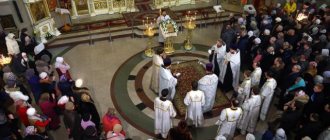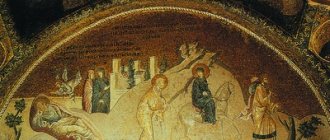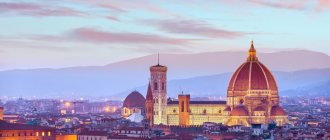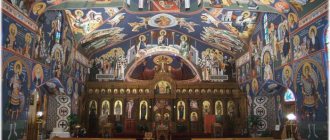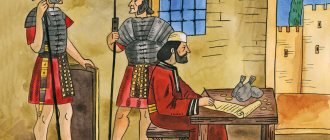“The Gifts of the Magi” or “the Adoration of the Magi” is a mention in the Gospel of Matthew, a famous story about magicians who came to worship the baby Jesus with special gifts. Christians and Catholics celebrate this event on January 6, as the day of Epiphany, although the date varies among texts.
Who are the Magi?
“Magi” is translated from Greek as “magicians.” Herodotus noted in his writings that these people were representatives of the Medes tribe, a special caste that was responsible for the religiosity of the entire people. Who are the Magi in the Bible? In the Old Testament they are mentioned as wise men and clairvoyants living among the Medes and Persians, and in the New Testament they are written about the Magi only once, when they recognized the Baby Jesus as the King of the Jews. According to tradition, artists depicted three magicians near the Infant God as people of different ages:
- a young man of African race;
- mature man – European;
- a gray-haired old man of oriental appearance.
Feast of the Three Kings in Spain
New Year's holidays are a magical time. Spaniards widely celebrate Christmas and New Year , but the culmination of all winter holidays is the Day of the Three Wizard Kings ( Reyes Magos ).
They are the ones in Spain who are responsible for performing the traditional tasks of Santa Claus: receiving letters and distributing gifts. Their Majesties arrive in the cities of Spain every year on January 5, accompanied by a magnificent retinue, so that no one is left without a gift. Most of all, of course, children look forward to the holiday, so Kings Day in Spain is considered a family holiday, because it wouldn’t hurt for adults to briefly plunge into a carefree childhood.
Gifts of the Magi - Bible
Who are the Magi and their gifts? In biblical legends they are also mentioned as three kings of other countries who came to recognize the power of the new ruler of Judea. The holy gifts of the Magi number three objects, so three petitioners were included in the legends. Although the writings of St. Augustine and John Chrysostom mention that there were twelve Magi, other legends name a larger number.
In some European countries, the day when the rulers came to worship Jesus is called the Feast of the Three Kings; in Spain they even organize magnificent cavalcades on January 5th. There are several versions regarding the date when the Magi arrived in Bethlehem:
- According to Orthodox traditions - twelve days after Christmas.
- According to the legends of the Eastern Church, months have passed since Christmas.
- In the Gospel of Pseudo-Matthew - over two years from the birthday of the Infant God.
What did the wise men bring as a gift to Jesus?
Christ's disciple Matthew describes that the Magi ruled far away in the eastern lands. When they saw the star of Bethlehem in the sky, they considered it a sign and followed it. Arriving in Jerusalem, they decided to turn to the reigning ruler Herod to find out how to find the new King of the Jews. He could not give an answer, and he himself asked the magicians to notify him where there was one, supposedly in order to greet him. The rulers followed the night luminary further to Bethlehem, where they found the Virgin Mary with little Jesus.
What did the Magi bring as a gift to the Infant God? All subjects of the legend are assigned a special meaning:
- gold is the personification of power;
- incense is a gift to the Son of God;
- myrrh - recognition that Christ is also mortal.
What did the gifts of the Magi mean?
The Gifts of the Magi to Christ is a shrine revered by all believers, a unique work of art by ancient masters. These are 28 plates of gold threads soldered into an original pattern, scientists define it as an ancient filigree technique with grain. Grains are small golden balls that protrude above the plate and make it richer. The pattern of any of them is unique, and all shapes are triangular and quadrangular. Strings of silver with sixty beads of frankincense and myrrh are attached to the geometric figures.
The gifts the Magi brought to Jesus indicate that the ancient magicians immediately recognized the fact: the real King of the Jews had been born. That’s why they chose expensive gifts even before they saw the Infant God. In the symbol of gifts, contemporaries see a reminder from God to people that the prophets who predicted the birth of the Son of God spoke the truth. There is a version that supposedly the gifts of the Magi gave rise to the tradition of exchanging gifts at Christmas, and later - giving them to newborns.
What were the names of the wise men who brought the gifts?
The names of the Magi who appeared to the little Christ are laid out on the mosaic of the Italian church of San Apolinar: Caspar, Melchior and Belshazzar. One of the legends also mentions the fourth sorcerer - Artabon. Scientists believe that the three kings received these names only during the Middle Ages. Because among other nations, the first who worshiped Jesus called their rulers differently:
- Abimelech, Ohozat, Ficol - among the early Christians;
- Hormizd, Yazgerd, Peroz - among the Syrians;
- Appellikon, Amerin and Damascon - among the Greeks;
- Magalakh, Galgalakh and Serakin - among the Jews
Three Kings Parade
This is a very beautiful procession, during which the Kings, each on his own carriage with his retinue, drive through the main streets of the city, accompanied by a variety of characters: fairies, pages, postmen, devils. to watch the festive cavalcade on January 5 , and are generously sprinkled with sweets by the kings' retinue.
Fun, beautiful, and raining candy! Officially, the holiday of the Three Magi in Spain is celebrated on January 6 . The first festival of the Magi Kings took place in 1855, and this event took place throughout the country.
Restoration
Today, the unfinished painting by the great Italian is kept in the Uffizi Gallery. In November 2011, experts from the Opificio delle Pietre Dure Institute announced that a painting that is not varnished begins to deteriorate. The restorers planned to clean the painting from traces of previous restoration work. According to them, all the figures depicted on the canvas will again become voluminous, the colors will become more vibrant, and the painting itself will become bright. However, during the discussions, it was decided not to carry out restoration work yet, so as not to distort da Vinci’s plan.
Literature
- ActaSS. Ian. T. 8. P. 323, 664;
- BHG, N 802–806b; BHL, N 5135-5138;
- NikТdhmoj. Sunaxarist"j. T. 4. S. 405-409;
- MartRom. P. 1, 8;
- JSV. Dec. pp. 704-715;
- Tarragona anonymous “About the city of Constantinople”: Lat. description of relics of the 11th century. // Relics in the art and culture of the Eastern Christian world. M., 2000.
- Tsarevsky A. S. Magi from the East and the Star of Bethlehem. K., 1891;
- Mityakin A.P. Magi from the East: Historical and exegetical essay // Kh. 1893. Part 1. pp. 13-37;
- Protopopov P. Magi of Egypt, Babylon and Bethlehem // ViR. 1901. T. 1. Part 2. P. 755-782, 801-818;
- Fiveysky M., priest. Gospel of Matthew // Lopukhin. Explanatory Bible. St. Petersburg, 1911. T. 8. P. 00-00;
- Kehrer H. “Die Heiligen Drei Könige” in der Legende und in der deutschen bildenden Kunst bis A. Durer. Strassburg, 1904;
- idem. "Die Heiligen drei Könige" in Literatur und Kunst. 2 Bde. Lpz., 1908-1909;
- Hildesheim, 1962;
- Skaballanovich M. About the star of the Magi. K., 1912;
- Knabenbauer J. Commentarius in Evangelium secundum Matthaeum. 2 Bde. 19223;
- Meisen K. Die heiligen drei Könige und ihr Festtag im volkstümlichen Glauben und Brauch. Köln, 1949;
- Olschki L. The Wise Men of the East in Oriental Tradition // Semitic and Oriental Studies. 1951. Vol. 11. P. 375–395;
- Monneret de Villard U. Le leggende orientali sui Magi Evangelici. Vat., 1952;
- Gordini GD Magi // BiblSS. Vol. 8. Col. 494-520;
- Leclercq H. Mages // DACL. T. 10. P. 980-1067;
- Riedinger U. Die Heilige Schrift im Kampf der griechischen Kirche gegen die Astrologie: von Origenes bis Johannes von Damaskos. Innsbruck, 1956;
- Montefiore H. Josephus and the NT // NT. 1960. Vol. 4. P. 139-160;
- Die Heiligen Drei Könige: heilsgeschichtlich, kunsthistorisch; das religionse Brauchtum / Hrsg. A. Wienand. Köln, 1974;
- Schulze A. Zur Geschichte der Auslegung von Mt 2, 1-12 // ThZ. 1975. Bd. 31. S. 150-160;
- Ferrari-d'Ochieppo K. Der Stern der Weisen. Wien, 1972;
- Hughes D. The Star of Bethlehem Mystery. L., 1979;
- Yamauchi EM The Episode of the Magi // Chronos, Kairos, Christos / Ed. J. Vardaman, E. M. Yamauchi. Winona Lake, 1989, pp. 15-39;
- Stramare T. Matteo 2,1–12: Gesù adorato dai magi a Betlemme (Parte I) // Bibbia e oriente. 1997. T. 39. P. 155-167;
- idem. Matteo 2,1–12: Gesù adorato dai Magi a Betlemme (v. 6) e tu, Betlemme, terra di Giuda // Ibid. 1998. T. 40. N. 2. P. 119-125;
- Forster H. Die Feier der Geburt Christi in der Alten Kirche: Beitr. z. Erforschung d. Anfänge d. Epiphanie-u. Weihnachtsfests. Tüb., 2000;
- Maalouf TT Were the Magi from Persia or Arabia? // Bibliotheca sacra. 2001. Vol. 156. P. 423-442.
Heritage
His life and work have been and continue to be studied by researchers from all over the world. The surviving works of Leonardo da Vinci in various fields allow us to judge the versatility of this man. Most of our readers know the brilliant Italian master as a painter. His works “The Last Supper”, “Lady with an Ermine”, “Mona Lisa”, “The Baptism of Christ” and many others are masterpieces of world art. In total, he created nineteen paintings, some of which remained unfinished.
The great Italian left his mark in science, medicine, and literature. Da Vinci himself considered himself primarily a scientist or engineer. He did not devote too much time to painting. His artistic heritage is small: a number of works are irretrievably lost, and some are badly damaged.
Among the unfinished works of the great painter is the painting “Adoration of the Magi.” The year of creation of the work (1481) is actually the beginning of work on it. The painting is distinguished by the mystery and mystery inherent in all the master’s work. According to experts, this is the first fairly mature work of the artist, in which he showed his bright individuality. He used his knowledge of anatomy to create the masterpiece, experimented with perspective, and applied his engineering research. However, this painting is endowed with something more than a work of art, even such a brilliant one - the secret of its design has not yet been revealed.
Secrets of the painting
Leonardo da Vinci's unfinished painting “The Adoration of the Magi” is of great interest among researchers around the world. However, the greatest results in this field were achieved by M. Seracini, a famous Italian bioengineer who devoted many years of his life to studying the life and work of the great master.
He used deep scanning of the paint layer, managing to penetrate under its upper layers and examine the original image applied to the canvas. As it turned out, the bottom of the picture was cut off by ten centimeters. It was first polished with solvents and then primed with white. Gradually cracks appeared on them and they were retouched again, but now blue paint was used.
Leonardo da Vinci's Adoration of the Magi was filled with many characters engaged in various activities. In total, Seracini identified 66 figures. In the foreground, the Magi present gifts to the sacred baby. But the Virgin Mary in the original version stands on a rock as on a pedestal, and not on the ground. In the back right corner, scenes of battles became clearly visible, while the upper left corner appeared to be filled with workers who were building a new beautiful temple.
Battle or duel?
In the upper right square, where two fighting warriors are depicted, a real massacre was highlighted. Seracini claims that the sight of this battle caused him shock. Probably, the painting originally contained the idea of a battle theme, which the author later implemented in the “Battle of Angyari”.
In this part of the picture, the artist reflected his attitude towards wars and the Crusades in particular. Under the battle scene you can see the faces of people who are turned towards the future temple of the new faith.
Seracini's description and analysis of the painting clarifies many of the pitfalls that became the prerequisites for the creation of da Vinci's masterpieces, but he is confident that the main discoveries are still ahead of us.
Where do the stairs lead?
In the upper left corner of the picture you can see two staircases, each of which has sixteen steps. They lead up to the platform where the ascent ends. In total, the stairs have thirty-three steps. This number became the "Da Vinci Code", which led some researchers to suggest that Leonardo was associated with the Knights Templar. This number coincides with the number of initiation into members of the order.
So, under a layer of paint, Seracini discovered on the upper platform of the building construction workers engaged in the construction of walls. According to the author’s plan, it became clear: the “symbol of paganism” was to be revived.
What does John the Baptist's gesture mean?
The Italian artist Leonardo da Vinci used an interesting element in his work - he depicted one, but very significant gesture of John the Baptist. It is interpreted in Catholicism as a call to repentance. Under the central tree, da Vinci depicted an old man with a pointing finger.
Leonardo da Vinci's painting "The Adoration of the Magi" draws the viewer's attention to the subtext associated with John the Baptist. This gesture is clearly visible, and the young characters in the background are not looking at Mary and Jesus, but at the man raising his finger up.
Tree of John
All researchers agree that da Vinci placed the carob tree (ceratonia) over Mary for a reason: it was associated in the symbolism of Catholicism with John the Baptist, who ate its beans during his wanderings in the desert. In those days they were the food of the poorest layers of the ancient Egyptians. Much later they began to feed livestock.
But John was so unpretentious during his wanderings that only a few pods from this tree were enough for him to eat. During the Renaissance, the image of this tree was associated with the presence of John himself.
